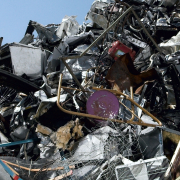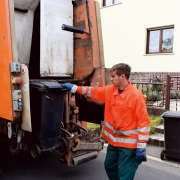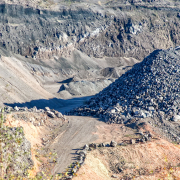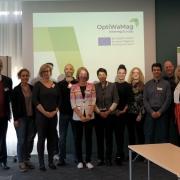ESWET Welcomes Landmark EU Parliament Vote on Net Zero Industry Act (NZIA)
On April 25, the European Parliament passed the Net Zero Industry Act (NZIA), recognising and strengthening Waste-to-Energy’s role towards a greener Europe.
ESWET* welcomes the EU’s ambition that led to this bold move and acknowledges the cooperation of the European institutions to get this legislation over the line. NZIA will accelerate the deployment of technology aimed at decarbonising the European industry. In addition, the new legislation harmonises permitting processes and public procurement with the goal of establishing a regulatory framework, encouraging private investment and streamlining the deployment of technologies such as:
Carbon Capture, Utilisation and Storage (CCUS) – Waste-to-Energy plants can reduce waste and achieve net negative carbon emissions due to waste’s 50-60% biogenic fraction. After pulp and paper plants, Waste-to-Energy has the highest potential for Bioenergy Carbon Capture and Storage (BECCS) in Europe with 36 million tonnes of CO₂ per year. AVR Duiven has had a CO₂ facility in operation since 2019, with a capture capacity of 100,000 tonnes CO2 per year, which can be routed to local horticulture to support the sustainable cultivation of fruit and vegetables. The NZIA sets a 50 million tonne CO₂ storage capacity by 2030 and requires Member States to facilitate CO₂ transport infrastructure.
Hydrogen technologies recover heat generated during the incineration process and put it to good use for district heating or other industrial processes. During this Waste-to-Hydrogen conversion, the biogenic fraction of the waste contributes to a low-carbon hydrogen whose use can help decarbonise the European energy system. At the Wuppertal facility, for example, hydrogen from the Waste-to-Energy plant was able to power the city’s public transport network.
Heat Pumps – Waste heat is a form of renewable energy that can be directed into district heating or towards industrial processes. In cities with advanced district heating systems such as Brescia or Malmö, Waste-to-Energy is able to provide over 50% of the city’s district heating needs. The sum of waste heat potential in the EU is 304.13 TWh/year, equivalent to almost 10% of the EU’s total industrial energy consumption.
Sustainable alternative fuels technologies – The Waste-to-Energy sector can also play a role in the production of Sustainable Alternative Fuels (SAFs). Using biogenic carbon that is captured from WtE plants and combining it with green hydrogen, the non-recyclable municipal solid waste finds a new pathway to becoming sustainable fuel, simultaneously contributing to decreasing landfill waste and GHG emissions. The Westenergy WtE plant in Finland, for instance, is participating in a Power-to-Methane project, soon to be operational, with a production capacity of 55,000 tonnes of synthetic gas per year.
Sustainable biogas and biomethane technologies – Municipal waste can provide a sustainable alternative to fossil fuels. The power from the Dietikon plant is combined with CO₂ from wastewater to produce biomethane, generating 18,000 MWh of natural gas substitute a year and reducing CO₂ emissions by up to 5,000 tonnes.
Far beyond incineration, the fact that so many of the technologies legally defined as ‘net-zero technologies’ in the NZIA are found in Waste-to-Energy plants highlights the sector’s key contribution in the net-zero transition. Marking the end of the legislative semester full of industrial and environmental advances, ESWET welcomes the EU’s ambition and embraces Waste-to-Energy’s role in creating a greener Europe.
*The European association representing manufacturers in the field Waste-to-Energy technology providers
Source: ESWET (Brussels, April 25, 2024)









